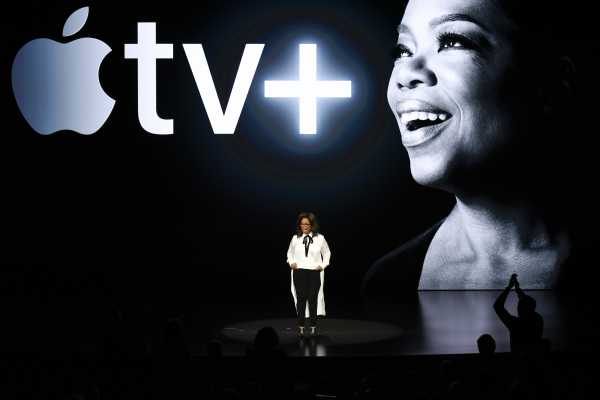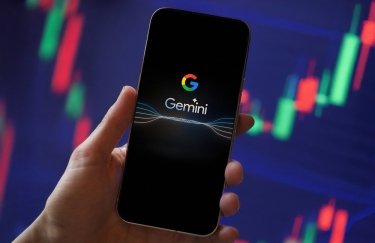
The most important details at Apple’s big announcement of its upcoming Apple TV+ service — launching this fall on an unspecified date, at an unspecified price point — were the ones it didn’t discuss.
The new Apple TV app, which will be available in May, strikes me as the closest that any company has come to assembling a Netflix killer, assuming it eventually lives up to its potential (a big assumption!). It offers a streaming-centric spin on the old-school cable bundle in one handy package, while also allowing customers to purchase the channels they want à la carte.
And when it eventually launches Apple TV+ — some still-hazy-on-the-details subscription service that will feature some sort of bundle of premium channels and streaming services — it’s going to have original TV shows of its own. But it’s going to be missing stuff, too. Particularly Netflix.
Related
We still don’t know what’s in Apple’s streaming service, how much it will cost, or why we should pay for it
Here’s a non-TV example of what I mean: Early in Apple’s presentation, the company announced its new AppleNews+ service, which will allow subscribers to read 300 magazines, plus several newspapers, plus several digital publications (including Vox, which will have a new section available on the platform), for $9.99 a month, with articles that subscribers might like pitched at them both by human curators and machine algorithms.
It’s easy to imagine plenty of consumers deciding that this new service sounds great and like something worth paying for. But just as important as the publications on offer are the ones that aren’t. When it came time to talk about the newspapers that would be involved, Apple led with the Los Angeles Times and the Wall Street Journal. Both are terrific, essential papers. But leading with them makes the absence of the New York Times and the Washington Post — both of which have opted out of the service — more conspicuous.
Something similar is bound to happen with both the new Apple TV and with Apple TV+. Because when it comes time for you to sign up, it’s going to have Hulu, and it’s going to have Amazon Video, and it’s going to have CBS All Access, and it’s going to have a host of smaller streaming services. But — at least in the version announced at Apple’s event on Monday — it’s not going to have Netflix.
Here’s what’s immediately promising about the new Apple TV that could make it such a strong competitor to Netflix and other services
For as much as Apple TV+ dominated the company’s presentation on Monday, it presented far more tangible details about its new spin on Apple TV. And that has some serious potential.
First of all, it’s no longer tied to an Apple TV device. You can simply download the Apple TV software to most devices and watch programming there. Like Netflix, it’s now much more about an app than about hardware. That frees viewers up to watch Apple TV anywhere, effectively.
When it comes to software, the new Apple TV looks a bit like a better-designed Amazon Video, which is to say sort of a slightly less overwhelming Netflix. As you subscribe to supported streaming services and other TV channels, you can pull their content into the Apple TV main screen, while also renting movies and TV shows from iTunes. Some combination of curatorial human editors and algorithms will recommend programs to you. And unlike the current interfaces for devices like the physical Apple TV and Roku, the new Apple TV app is primarily focused on individual programs over services.
Such an experience would be subtly different than the one many people are currently familiar with. For instance, I have a Roku, and if I want to stop watching The Marvelous Mrs. Maisel and go check out The Handmaid’s Tale (a real whiplash-inducing evening of viewing I’ve planned for myself!), I have to leave Amazon Video behind, navigate to the Roku home screen, and then log in to Hulu. It’s not that difficult, honestly, but it requires knowing exactly which services air those two shows, and as a TV critic who thinks about this stuff all the time, it’s something I have an easier time with than 99 percent of the population.
Apple TV’s new interface isn’t radically different, but if you really wanted to watch Mrs. Maisel and The Handmaid’s Tale back to back, you could head back to the home screen and see them nestled right next to each other at the show level. Again, this is actually pretty similar to how Amazon Video functions, especially if you subscribe to a bunch of TV channels through Amazon Video. But it’s notable for being one of the first TV services to treat content from streaming services in this way.
Amazon Video, for instance, doesn’t have Hulu content. By integrating those streaming services into its home screen hub and breaking them down by program, rather than by streaming service, the new Apple TV removes a barrier for our theoretical viewer who wants to flip from Mrs. Maisel to The Handmaid’s Tale very quickly.
It’s here where you can see how the potential absence of Netflix from even the basic Apple TV could cause headaches for both companies. If you have to navigate away from Apple TV entirely to go look at Netflix, that breaks the smooth continuity of service that Apple TV is going for, while also perhaps making it just inconvenient enough to get to Netflix that viewers will lean toward the ocean of other content available on Apple TV.
The original dream of streaming services was that there would eventually be one where you could pay a single fee and get everything you might want to watch in one handy place, along with a bunch of stuff you didn’t know you wanted to watch that the service would recommend to you. Ideally, it wouldn’t have ads, and ideally, you could set your price point depending on how much stuff you wanted to pay for. It’s since become clear that reaching that point will require some sort of bundle of other services, and this new Apple TV is the closest I’ve seen to a framework that might allow such a bundle to exist someday.
Related
The future of streaming is the cable bundle
Now, it’s perhaps inevitable that bundle prices would increase as more streaming services launched, but if it comes time to create a new version of a cable bundle that lumps a bunch of streaming services together, well, Apple is one of the largest corporations on the planet. It certainly has the leverage to create a kind of mutant hybrid of the old-fashioned cable bundle, in similar fashion to how it managed to corral all of the big music companies under the same umbrella at the dawn of iTunes.
I can’t overstate that a lot of today’s existing streaming options already do all of the above, but in a less integrated fashion than the new Apple TV seems to. And I think perhaps the most significant feature of the new product is that it will be available on internet browsers, on smart TVs, and on other devices like the Roku and Amazon Fire TV Stick.
You won’t have to buy a piece of Apple TV hardware to get access to Apple TV, and if the service lives up to its best self, its resulting ubiquity will be its strongest claim to surpass Netflix. It is less a single subscription service than a place where you can build your dream streaming bundle, customized however you want.
But there’s a huge caveat to all of this: Core to this mission is the eventual launch of Apple TV+, with all its original shows and whatever else it might offer. And when it comes to Apple TV+, I’m not precisely sure Apple knows what it’s doing. Like … at all.
Apple TV+ mostly seems to exist because it gave the company a way to have Steven Spielberg and Reese Witherspoon attend a launch event
In the immediate wake of Apple’s announcement, there are at least five big questions surrounding Apple TV+:
Apple’s presentation addressed none of these questions. It didn’t even really try to.
At one point during the Apple TV+ launch, my friend and fellow journalist Pilot Viruet snarked that it seemed more like the company was trying to sell us on screensavers than TV shows. And Pilot had a point with their jab. The presentation was full of moments where Apple would haul out a celebrity like Steven Spielberg or Reese Witherspoon or Oprah Winfrey, have them talk a little bit about their new show, and then display a subtly flickering image meant to put us in the headspace of that show.
Footage was shown … eventually. But it was just a montage of out-of-context moments from the many, many shows that Apple has in development, and has had in development for months and even years now. (The company bought its first major production — The Morning Show, starring Reese Witherspoon and Jennifer Aniston — back in November of 2017!)
And in the period leading up to Monday’s announcement, rumors swirled around Apple’s apparently heavy content restrictions on its show creators, and around its apparent willingness to buy show pitches with famous names attached, without really thinking about whether they’d actually work as TV shows. (The Morning Show, for instance, was picked up without any scripts, based only on a “concept.” No wonder it’s taken so long to come to air!)
Most existing concerns about Apple’s approach to development would be negated by the promise of some legitimately great TV. But all the company had to show at its Apple TV+ announcement was a sizzle reel that contained almost no dialogue and amounted to little more than a collection of impressive shots from 10 to 15 shows.
Some of those shows certainly have potential. But it’s important to remember that it isn’t terribly difficult to assemble a good-looking clips package when you only need 20 seconds of footage, at most, from any given show.
What’s more, Apple’s original content seems almost deliberately skewed toward big names — big stars, big showrunners, and big directors. Apple TV+ is the future home of a show created by singer-songwriter Sara Bareilles, probably because Apple assumes you’ve heard of her. Maybe it will be good! But it’s notable that Netflix established its toehold in the original content game with shows made by established TV talent who really knew how the medium functioned, like Orange Is the New Black, BoJack Horseman, and Unbreakable Kimmy Schmidt.
There are plenty of folks who fit that description working at Apple, including Jason Katims (who signed a big deal with the company) and The Morning Show showrunner Kerry Ehrin (who was the mind behind the wonderful Bates Motel). But the company seems to have put a premium on hiring as many big names as possible, which is rarely a recipe for great television.
And that makes all of the open questions surrounding Apple TV+ — particularly regarding what it will cost and what consumers will get beyond Apple’s original programming — that much more vexing. If any company is going to beat Netflix at its own game, it’s going to be Apple (and it’s worth noting that persistent rumors that Apple has considered just outright buying Netflix made it to the Wall Street Journal on Sunday). And there are some great ideas in the core Apple TV product. But so far, the most significant aspect of Apple TV+ is that its launch was defined by all of the missing information lurking just off stage, never invited out into the spotlight.
Sourse: vox.com






